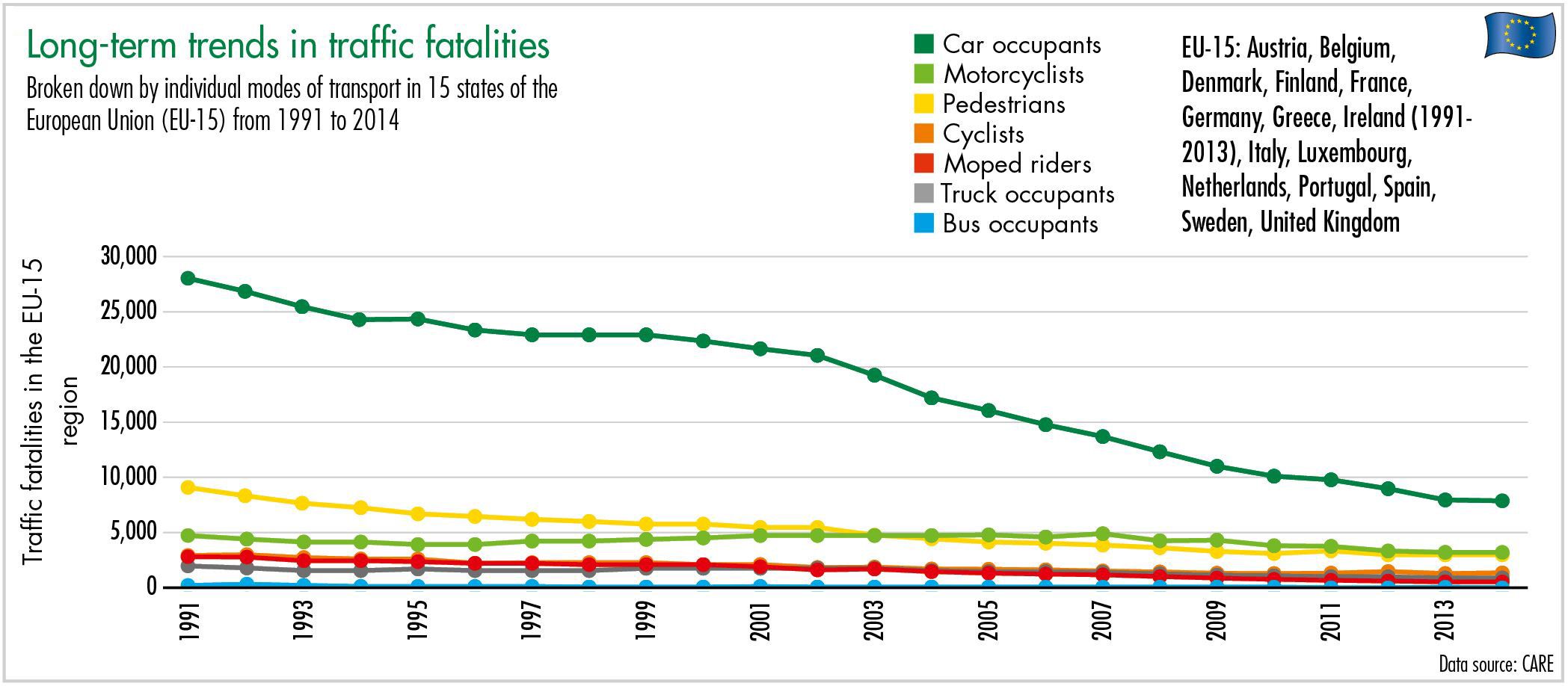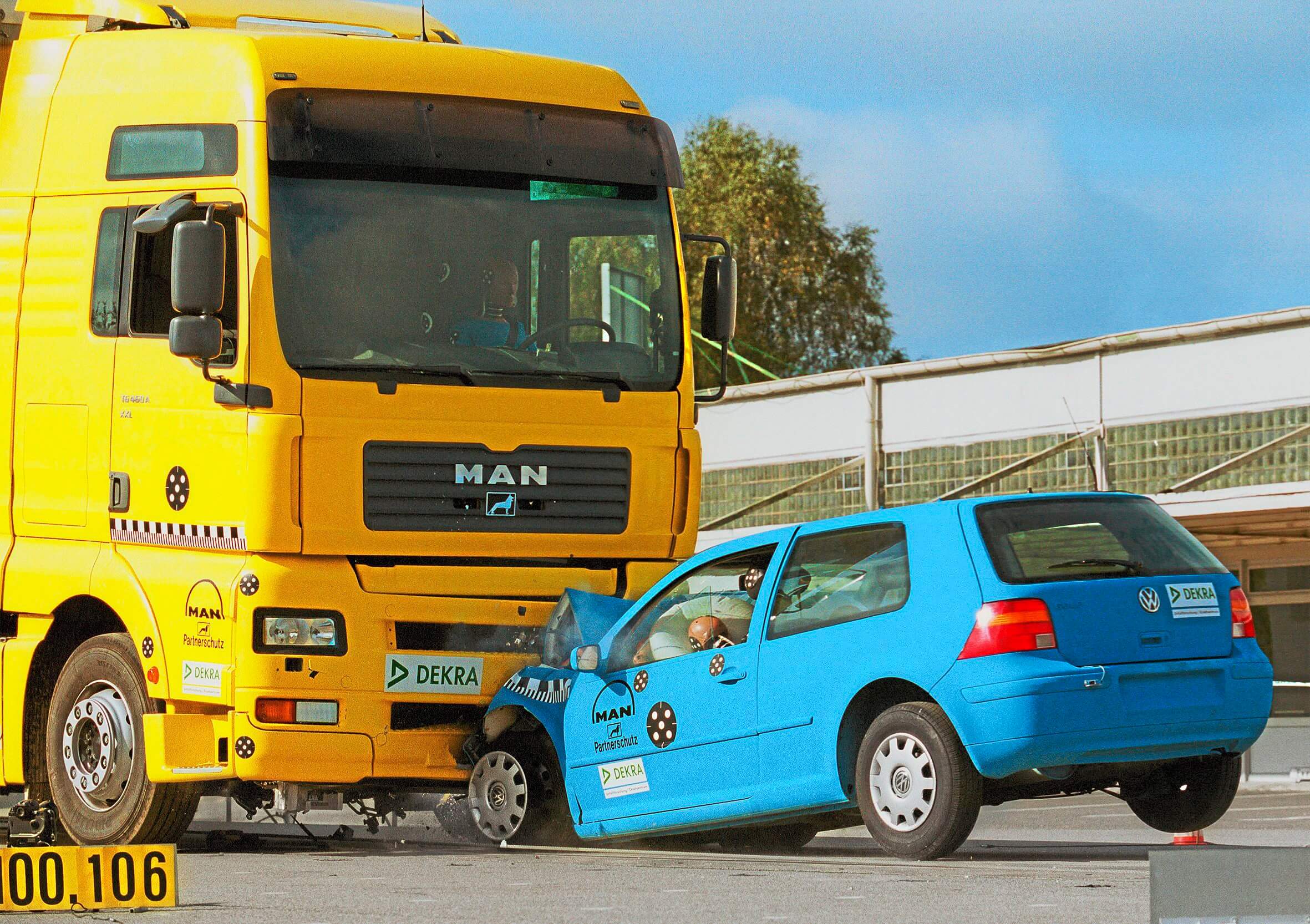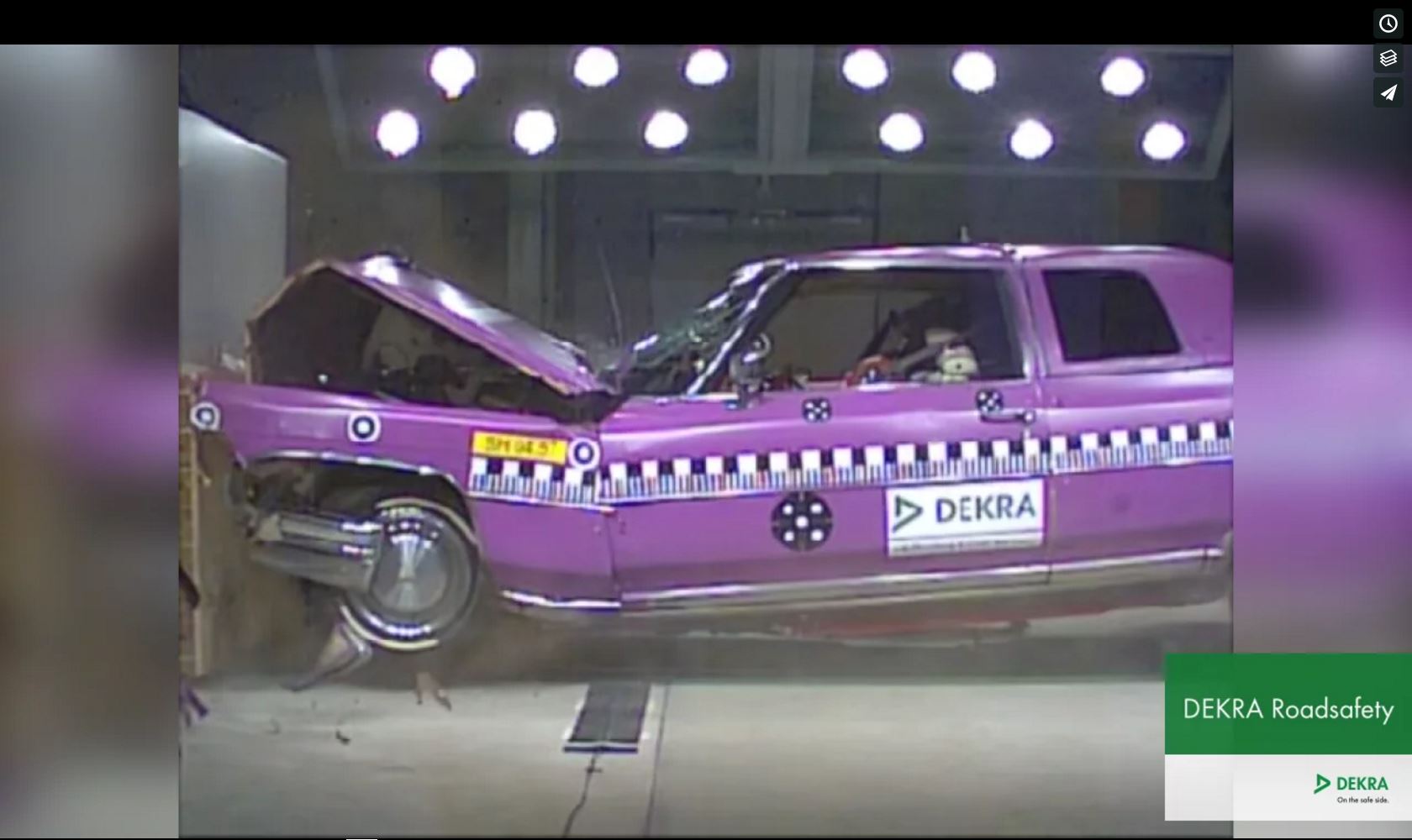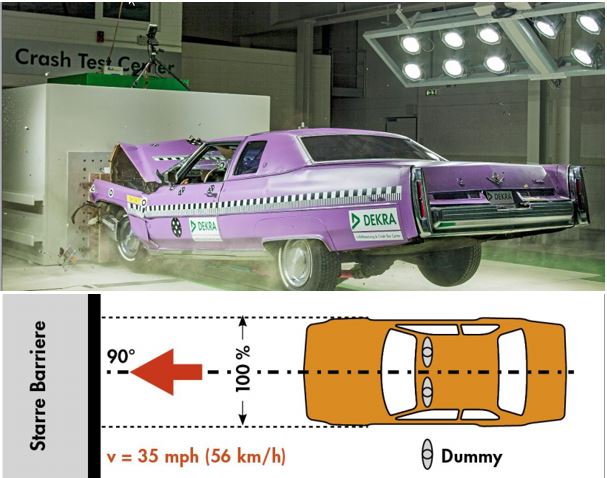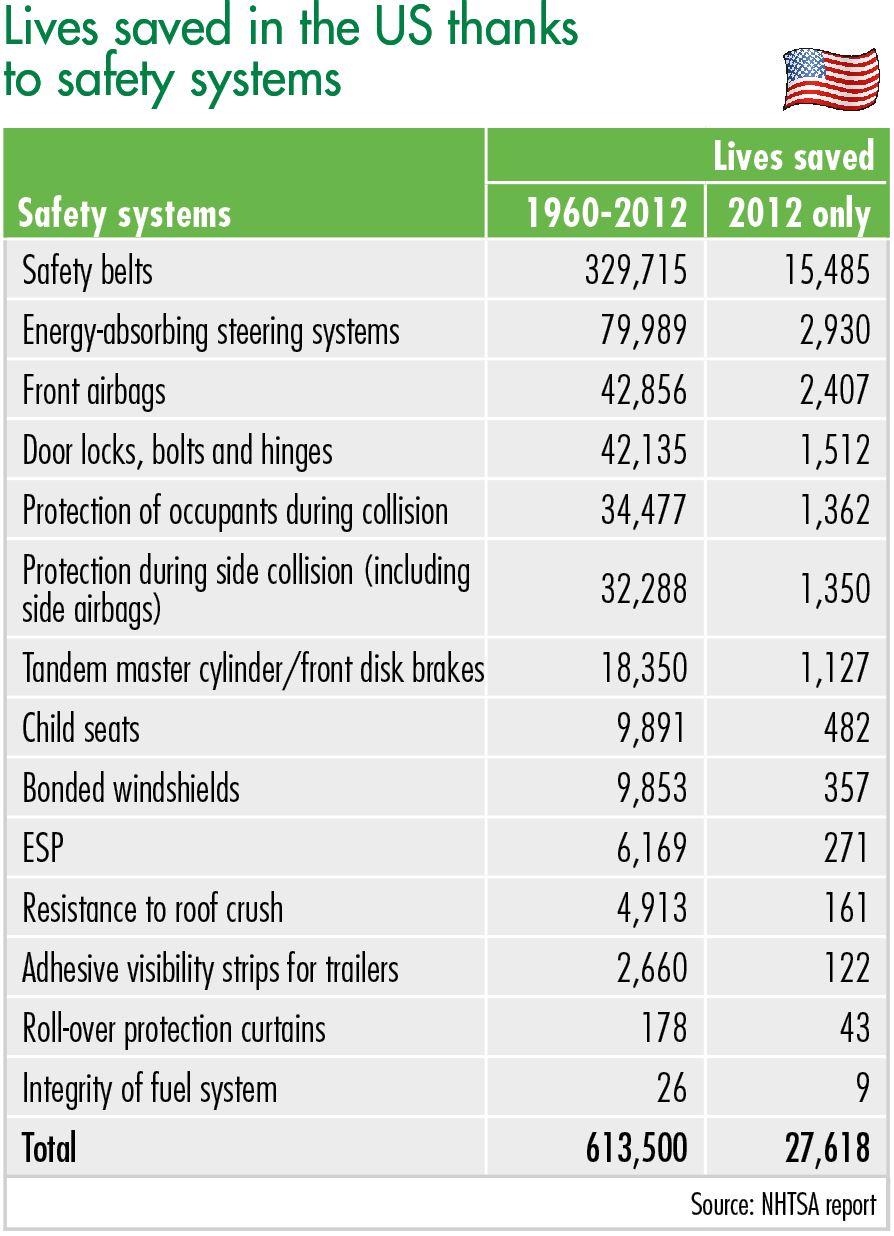The main cause of crashes resulting in personal injury and/ or material damage
Over the past few years, state-of-the-art vehicle technology and ongoing innovation in the automotive industry and by their suppliers have played a key role in improving road safety all over the world. As active and integral safety elements, new and improved driver assistance systems offer considerable potential for avoiding accidents – both today and in the future. On the road toward autonomous driving, increasingly effective systems are finding their way into our cars even today. The number one lifesaver, however, remains a properly worn safety belt.
The findings from traffic accident researchers say the same thing time and time again: The main cause of crashes resulting in personal injury and/ or material damage is human error. On average, humans are responsible for more than 90% of all accidents. Experience suggests that errors occur, above all, in perception as well as in the absorption and processing of information. To compensate to a certain extent for human shortcomings and errors, the automotive industry has for many years been increasingly focusing on driver assistance systems that are capable of recognizing critical driving and traffc situations early on, warning of dangers and, if necessary, actively intervening – for example, electronic dynamic handling control systems; speed warning systems; emergency braking systems; lane support systems; alcohol interlocks; automatic emergency call systems (eCall) for all vehicles including motorcycles, heavy-duty commercial vehicles and buses; safety belt reminders for all vehicle occupants; and tire pressure monitoring systems.
EU calls for the mandatory installation of assistance systems
Given that vehicle technology as well as active and integral safety technologies help to improve road safety over the long term, the EU Commission is strongly committed to the increased use of driver assistance systems and to the potential compulsory installation of such systems in the future. This can be seen in its report, published in December 2016, to the European Parliament and the European Council (“Saving Lives: Boosting Car Safety in the EU”), in which the Commission identified four key action areas with 19 specific measures to improve vehicle safety. Active safety measures, which can prevent accidents altogether rather than merely mitigating the outcome, are deemed to be the most important. This area includes automatic emergency braking, intelligent speed adaptation, lane keep assistance and driver drowsiness and distraction monitoring.
So-called “passive” safety measures, which mitigate the outcome of accidents, include emergency braking displays (flashing stop lamps/automatic activation of the hazard warning indicator), safety belt reminders, utilizing the potential of the passenger cell (through frontal, side and rear crash testing), standardization of alcohol-sensitive immobilizers, crash event data recorders and tire pressure monitoring. The proposed measures to improve the safety of trucks and buses involve the introduction or improvement of front-end design and direct vision, truck and trailer rear underrun protection (rear bumper), lateral protection (side guards) and tire safety for buses. Measures for the safety of pedestrians and cyclists include: the introduction of pedestrian and cyclist detection (linked to automatic emergency braking systems), a frontend design optimized to mitigate the severity of collisions with pedestrians and cyclists and detection of persons behind vehicles while in reverse gear.
In its report, the EU Commission also suggests that the availability of well-founded and more nuanced accident data from across the EU is improved. This type of data, says the report, is a prerequisite for the development and monitoring of EU road safety policy. Specifically, it continues, the data is required to assess the eectiveness of the measures in terms of road and vehicle safety and to support the development of new measures.
Safety systems save many lives
As has been stated many times in the DEKRA Road Safety Reports published over the past few years, modern-day driver assistance systems are merely the continuation of a long series of measures that have made invaluable contributions to making our cars safer. Examples from over the years include disk brakes, which were invented as early as 1902; radial tires, which were developed at the end of the 1940s; rigid passenger cells – patent filed in 1951 – with front and rear crumple zones; three-point safety belts, patented in 1959; safety steering shafts for vehicles – patent filed in 1963; driver airbags, patented in 1971; anti-lock brake systems, which were installed in vehicles from 1978; and the electronic stability program (ESP) introduced in 1995.
The extent to which systems such as safety belts, airbags and safety steering columns in particular have increased road safety in recent decades is illustrated in a study conducted by the National Highway Traffc Safety Administration for the USA. According to this study, this array of systems has helped to save more than 600,000 lives in the USA alone between 1960 and 2012. Safety belts, front airbags and safety steering columns account for almost 75% of the lives saved. According to the study, systems such as ESC (electronic stability control) in particular will also offer increasing potential for preventing accidents in the future. NHTSA estimates that these systems can help to reduce the number of car and SUV crashes by 34% and 59% respectively. Given a market penetration of 100% in passenger cars, ESC could save between 5,300 and 9,600 human lives a year in the USA. Admittedly, it is always important to bear in mind that it generally takes at least six to ten years before new safety systems are present in a majority of vehicles. Once it has become a legal requirement to equip vehicles with such systems, it takes around 15 years for the systems in question to achieve a sufficiently high level of market penetration.
Tests for informing consumers about car safety
The fact that modern-day cars are so safe can be attributed to not only ongoing updates to international rules and regulations, but also and above all the research and development teams of manufacturers and suppliers. Legal minimum standards and independent testing play an important role here. The New Car Assessment Program (NCAP) tests conducted for the first time in 1978 under the auspices of the National Highway Traffic Safety Administration (NHTSA) were – and remain – truly groundbreaking. The program initially focused exclusively on testing passive safety systems for public information purposes. New vehicles from different manufacturers are to this day continuously subject to a range of crash tests and the results are evaluated in a standardized manner. The tests are based on the legally binding configurations defined in Federal Motor Vehicle Safety Standards (FMVSS), which generally stipulate higher collision speeds. In the NCAP, the results are summarized in an overall evaluation of “crashworthiness” illustrated with star ratings. This rating system, which was chosen as a simple means of informing consumers, ranges from one star (very high risk of occupants suffering serious injuries) to five stars (very low risk of occupants suffering serious injuries).
As a tried-and-tested “best practice”, NCAP is used in many other regions of the world. Australian NCAP (ANCAP), for example, was introduced in 1992 and, a year later, rolled out to the Australasia region; Japan NCAP (JNCAP) was launched in 1995 and Euro NCAP in 1996. The Korean New Car Assessment Program, based on Euro NCAP, was launched in 1999, and the state NCAP in China has also since been largely adapted in line with Euro NCAP standards. NCAP has overall proved to be an effective measure to promote major and longterm improvements in vehicle and road safety. This can be seen in the EU, too, where in particular the number of passenger car occupants killed in accidents has for years been declining much more rapidly than, say, the number of motorcyclists, pedestrians or cyclists.
The US Insurance Institute for Highway Safety (IIHS) has also been conducting comparative crash tests since 1995. The crash test was initially designed in the form of an offset frontal collision with 40% overlap and a collision speed of 64km/h. In 2003, an additional test was introduced in which a mobile barrier collides with the side of a vehicle at a speed of 50km/h. The program was extended in 2012 to include a second frontal collision test, again with a collision speed of 64km/h, but this time with just 25% coverage. The IIHS rating includes not only the injury risks derived from dummy stresses, but also an evaluation of the function of the restraint systems and the structural behavior of the car body. The results are divided into four categories ranging from “good” to “bad.”
